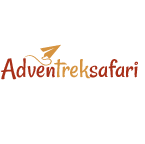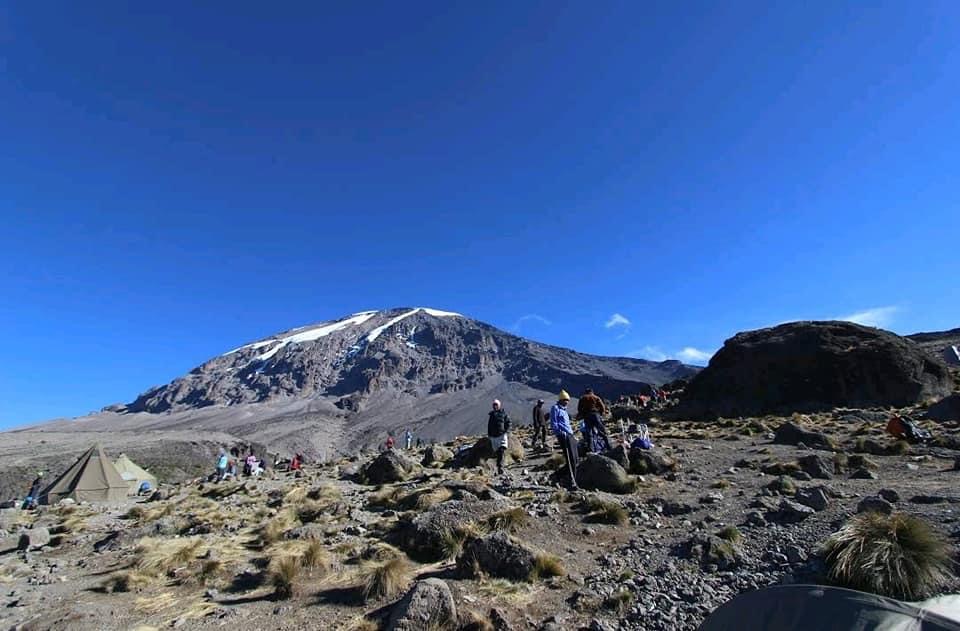Climbing Kilimanjaro in 2025: The Complete Guide by Adventrek Safari
Updated August 2025
Standing at 5,895 meters (19,341 feet), Mount Kilimanjaro is Africa’s tallest peak and one of the world’s most sought-after trekking destinations. As tourism in Tanzania continues to grow post-pandemic, 2025 is shaping up to be a great year to take on this epic challenge—with enhanced safety standards, environmental reforms, and a growing emphasis on ethical climbing practices.
In this guide, Adventrek Safari breaks down everything you need to know before climbing Kilimanjaro: routes, seasons, training, gear, costs, porter welfare, and more—so you can start planning with confidence.
Choosing Your Kilimanjaro Route: What’s Right for You?
Each Kilimanjaro route offers a different trekking experience based on duration, landscape, acclimatization success, and traffic. Here’s an overview to help you decide:
🏕 Marangu Route (Coca-Cola Route)
-
Accommodation: Mountain huts (not tents)
-
Duration: 5–6 days
-
Best for: Beginners seeking comfort
-
Note: Has a lower success rate due to rapid ascent
🥾 Machame Route (Whiskey Route)
-
Accommodation: Tents
-
Duration: 6–7 days
-
Best for: Trekkers looking for challenge + scenery
-
Note: Popular for its varied landscapes and better acclimatization profile
🌄 Lemosho Route
-
Accommodation: Tents
-
Duration: 7–8 days
-
Best for: Trekkers who want a scenic and less crowded experience
-
Note: High success rate and incredible western approach views
🌿 Rongai Route
-
Approaches from: The north
-
Duration: 6–7 days
-
Best for: Quiet trails and dryer weather
-
Note: Less busy and ideal in the rainy season
🌍 Northern Circuit
-
Duration: 9–10 days (longest route)
-
Best for: Maximum acclimatization and panoramic views
-
Note: Quiet, remote, and the best for slow, steady climbers
🧗 Umbwe Route
-
Duration: 5–6 days
-
Best for: Experienced trekkers seeking a tough climb
-
Note: Steep, direct, and less traveled
Route Tips:
-
Match your fitness level and experience to the route difficulty.
-
Longer routes = higher summit success rates.
-
Crowd-sensitive? Choose Rongai or Northern Circuit.
-
Love views? Lemosho or Machame is your pick.
When to Climb Kilimanjaro: Best Seasons in 2025
Weather on Kilimanjaro can be unpredictable, but these seasonal patterns can help you choose the best window:
Dry Seasons (Ideal for Climbing)
-
January to Mid-March: Quieter trails, clear skies, and great for photography
-
June to October: Peak season, sunny days, dry trails, and more climbers
Rainy Seasons (Challenging Conditions)
-
Mid-March to May (Long Rains): Wet and slippery, but less crowded
-
November to Mid-December (Short Rains): Light showers, manageable for experienced trekkers
🌦 Note: Due to climate change, weather can vary from historical trends. Always check the forecast close to your travel dates.
Preparing for the Climb: Train Like a Trekker
Trekking at high altitude demands physical preparation. Start training at least 2–3 months before your climb.
🏃♀️ Cardio & Endurance
-
Hiking, jogging, swimming, or cycling for 30–60 minutes, 3–4 times per week
💪 Strength & Core
-
Lunges, squats, planks, and stair climbing help prepare your legs and back
🏔 Altitude Readiness
-
Practice hiking at elevation if possible
-
Consider using an altitude training mask to simulate thinner air conditions
Gear Checklist for Kilimanjaro 2025
👕 Clothing
-
Base layers (moisture-wicking)
-
Fleece jacket or insulated down
-
Waterproof outer shell
-
Thermal socks, gloves, sunhat, and beanie
👟 Footwear
-
High-quality, broken-in hiking boots
-
Gaiters for dust and mud protection
🎒 Equipment
-
Daypack (20–30L)
-
Duffel bag (carried by porters)
-
Trekking poles, hydration system, headlamp, sunglasses
Need help packing? Adventrek Safari provides detailed gear checklists and rental options.
Understanding Altitude Sickness (AMS)
Altitude sickness is a real risk on Kilimanjaro. Knowing the signs and prevention methods is essential.
🩺 Common Symptoms
-
Headache, nausea, fatigue, shortness of breath
✅ Prevention
-
Go “pole pole” (slowly)
-
Stay hydrated (3–4 liters/day)
-
Eat well and sleep adequately
-
Discuss Diamox or other medications with your doctor in advance
Climbing Ethically: Support Porter Welfare
Treks on Kilimanjaro would not be possible without porters, who carry supplies and help set up camps. Ethical trekking ensures they’re treated with dignity and fairness.
Issues Still Faced:
-
Overloading
-
Low wages
-
Lack of gear or proper meals
How You Can Help:
-
Pack light: Max load is 15 kg per porter
-
Tip fairly: $2+ per porter/day is the standard
-
Be kind: Respect goes a long way
Adventrek Safari partners with organizations that support fair treatment, fair pay, and proper equipment for all staff.
Kilimanjaro Climb Costs in 2025
Pricing depends on your route, number of days, and service level. Here’s what you can expect:
Average Costs:
-
Standard Private Climb: $2,500 – $3,500
-
Luxury Climb with Upgraded Services: $4,000+
What’s Included (Typically):
-
Park and camping fees
-
Tents/huts and equipment
-
Guides, cooks, and porters
-
Meals, water, and rescue service
-
Airport pickup and drop-off
Booking Tips:
-
Reserve early for high season
-
Choose a reputable and licensed operator (like Adventrek Safari)
-
Clarify what’s included vs. excluded (gear, tips, flights)
Leave No Trace: Climbing Responsibly
Preserving Kilimanjaro is key to keeping it beautiful for future climbers.
🏞 Eco-Trekking Essentials:
-
Carry out all your waste
-
Use biodegradable toiletries
-
Stick to marked trails
-
Avoid single-use plastics
Recent regulations from Tanzanian authorities are tightening sustainability standards, so expect more awareness on the mountain.
Final Thoughts: Is Kilimanjaro Worth It?
Absolutely. Climbing Kilimanjaro is more than just a physical achievement—it’s a journey through diverse ecosystems, cultural exchanges, and self-discovery. Whether you’re chasing personal milestones or experiencing nature at its rawest, the reward is unforgettable.
Let Adventrek Safari guide you to the summit in 2025 with safety, comfort, and integrity at the forefront.
Ready to Start Your Kilimanjaro Adventure?
Contact Adventrek Safari today for a personalized climbing package. Our team will help you choose the right route, plan your training, and ensure an ethical, unforgettable summit experience.

